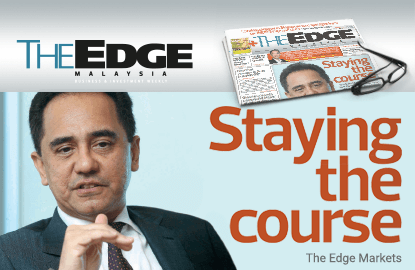
KUALA LUMPUR (April 30): It has been slightly more than a year since Datuk Wan Zulkiflee Wan Ariffin took the helm of state-owned Petroliam Nasional Bhd (Petronas) as its president and CEO — and what a tumultuous time it has been, according to the Edge weekly in its latest cover story.
The Edge’s Azam Aris, Kathy Fong and Jose Barrock wrote that for starters, earlier this year, the company offered a rare separation scheme, reducing its staff count by 1,060, or about 2% of its 51,000 workforce.

They said this came against a backdrop of plummeting oil prices.
International benchmark West Texas Intermediate (WTI) hit a record high of more than US$145 per barrel in early July 2008 but plunged to a 13-year low of US$26.21 in February this year. Over the past 12 months, WTI has averaged only US$44.08, the Edge reported.
As a result, Petronas has scrapped several plans, such as the once-in-vogue enhanced oil recovery or EOR and the development of marginal oil fields, it said.
The weekly said there have also been significant cuts in capital expenditure (capex) and operational expenditure (opex) of RM50 billion over the next four years, starting with RM15 billion to RM20 billion this year alone.
It said the oil company’s earnings for the year ended December 2015 took a beating as well. It recorded a revenue of RM247.66 billion, a 25% dip from 2014, and after-tax profits of RM20.86 billion, 56% lower than 2014.
Petronas made provisions for impairments of close to RM17.7 billion in 2015, and RM23 billion in 2014, which added to the bleak financial performance.
In an exclusive interview with The Edge, Wan Zul, in his candid manner, explains, “We just want to be prudent, and of course when the price comes back, we can always write back.”
Asked about the downturn, he says, “I think it’s a real test for the whole industry. It’s a structural shift for the industry, and for Petronas, we are responding to the environment. What we do not want to do is to waste a crisis, so we are looking internally at how to improve and looking at how we can be more efficient. This has been the focus for the last few months.
“The psyche of the organisation is different at US$100 or US$110 oil than at US$30 or US$40 oil. At the current US$30 or US$40 oil, the psyche is that we have to be efficient and lean. It’s easier to get that kind of behaviour now than in an US$100 or US$110 oil situation. So, we are being tested in a very different way today. Our role here is also to prepare an organisation that can withstand the test of time in terms of all these challenges that we see and work on a new normal,” he goes on.
For more details on what lies ahead for the national oil firm, read the last edition of the Edge weekly for the week of May 2 to May 8 available at newsstands now.
Save by subscribing to us for your print and/or digital copy.
P/S: The Edge is also available on Apple's AppStore and Androids' Google Play.